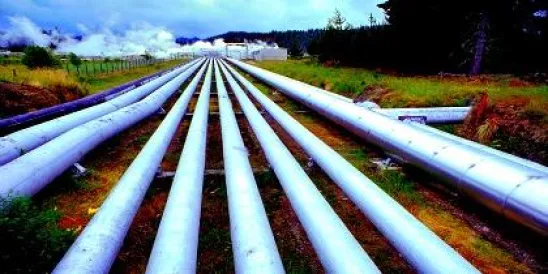On October 24, the United States Court of Appeals for the Fifth Circuit in Texas Pipeline Association v. Federal Energy Regulatory Commission[1] held that the Federal Energy Regulatory Commission (FERC) exceeded its statutory authority in issuing Order Nos. 720[2]and 720-A,[3] which required certain intrastate natural gas pipelinesto post information on scheduled flow and design capacity. These posting requirements were established to (1) improve market participants' ability to assess supply and demand and to price physical natural gas transactions, (2) help market participants better understand the impact of disruptions to the natural gas delivery system on the industry and economy, and (3) allow market participants to identify potentially manipulative activity.
Under Order No. 720, major non-interstate natural gas pipelines were required to post the amount of volume scheduled to flow in and out of each receipt and delivery point that had a design capacity equal to or greater than 15,000 MMbtu per day.[4] Affected pipelines were required to post the information daily on a website no later than 10:00 p.m. central time the day prior to gas flow and make it available in downloadable files. Order No. 720 also required interstate pipelines to post the volumes of no-notice service flows at each receipt and delivery point by 11:30 a.m. central time within three days after the day of gas flow.[5]
Order No. 720 defined a "major non-interstate natural gas pipeline" as one that "(1) [was] not a 'natural gas company' under section 1 of the [Natural Gas Act of 1938 (NGA)]; and (2) deliver[ed] annually more than 50 million MMBtu of natural gas measured in average receipts or in average deliveries for the past three years."[6] The 50 million MMBtu delivery threshold was determined on a facility-by-facility basis. If an entity operated multiple pipelines, the facility was composed of a set of facilities that was both physically interconnected and operationally integrated.[7]
In Texas Pipeline Association v. Federal Energy Regulatory Commission, Texas Pipeline Association and the Railroad Commission of Texas sought judicial review of Order Nos. 720 and 720-A on the ground that the Orders exceeded FERC's statutory authority under section 1(b) of the NGA. Section 1(b) states that the NGA applies "to the transportation of natural gas in interstate commerce [and] to the sale in interstate commerce of natural gas for resale . . . but shall not apply to any other transportation or sale of natural gas or to the local distribution of natural gas or to the facilities used for such distribution."[8] In issuing Order No. 720, FERC relied heavily on its grant of authority pursuant to section 23 of the NGA, which was part of the Energy Policy Act of 2005 and allows FERC to obtain and disseminate information about "the availability and prices of natural gas sold at wholesale and in interstate commerce" from "any market participant."[9] In their petitions for review, the petitioners argued that Order Nos. 720 and 720-A exceeded the authority of FERC granted by the NGA.
The Fifth Circuit held that FERC did not have the authority to issue Order Nos. 720 and 720-A to require wholly intrastate pipelines to disclose and disseminate capacity and scheduling information. The court rejected all of FERC's attempts to demonstrate that its authority under section 23 was not subject to the jurisdictional limitations imposed by section 1(b).[10] Instead, it stated that section 23 must be read in the context of FERC's jurisdiction under section 1(b), which denies FERC the authority to regulate entities excluded from the NGA, including wholly intrastate pipelines and LDCs. The court reasoned that the phrase "any market participant" therefore could not apply to intrastate pipelines and that if Congress intended to expand FERC's jurisdiction, it would have done so explicitly and unambiguously, as it had done in other amendments to the NGA. Therefore, the court concluded that FERC did not have the statutory authority to promulgate Order Nos. 720 and 720-A and vacated the orders.
[1]. Case No. 10-60066 (5th Cir. Oct. 24, 2011).
[2]. Pipeline Posting Requirements under Section 23 of the Natural Gas Act, 125 F.E.R.C. ¶ 61,211 (2008) (Order No. 720).
[3]. Pipeline Posting Requirements under Section 23 of the Natural Gas Act, 130 F.E.R.C. ¶ 61,040 (2010) (Order No. 720-A).
[4]. A major non-interstate pipeline could be exempted from complying with the posting requirements if it (1) fell entirely upstream of a processing, treatment, or dehydration plant; (2) delivered more than 95% of its natural gas volume directly to end users; (3) was a storage provider; or (4) was solely a receipt point with a stated design capacity of 15,000 MMBtu per day if the scheduled flow of gas was less than 5,000 MMBtu per day on each day for the prior three calendar years. Order No. 720 at P 107.
[5]. The court vacated Order No. 720 on the grounds that FERC did not have jurisdiction over intrastate pipelines. It is uncertain how FERC will treat the portion of Order No. 720 that set forth regulation of interstate pipelines.
[6]. Order No. 720 at P 64. "Major non-interstate pipeline" also includes Hinshaw pipelines and local distribution companies (LDCs) operating under a section 7(f) service area determination.
[7]. Order No. 720-A at P 77.
[8]. 15 U.S.C. § 717(b).
[9]. 15 U.S.C. § 717t-2(a)(2)-(3) (emphasis added).
[10]. FERC presented three primary arguments. First, it argued that Congress intended to create a new "transparency authority" by adding section 23 that was to be separate and distinct from its authority under section 1. Second, FERC maintained that section 23 must have been enacted to expand its authority to include intrastate pipelines because section 1 already granted it authority over interstate pipelines. Third, it asserted that the phrase "any market participant" should be broadly construed because it was included in the statutory language instead of "natural gas company."



 />i
/>i

